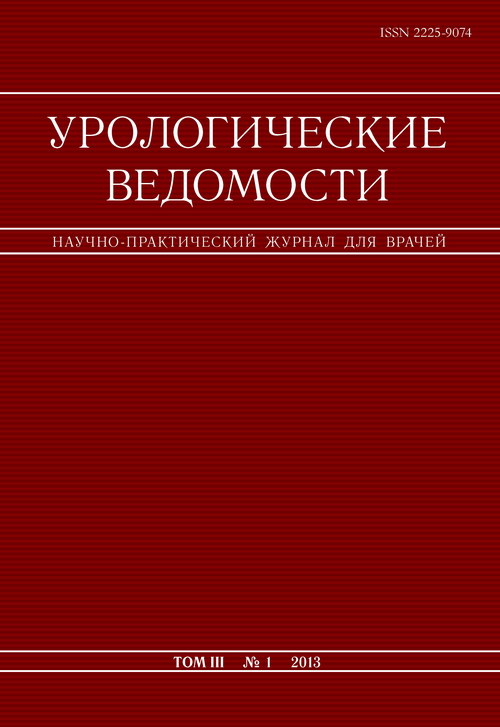Метод биологической обратной связи в лечениистрессового недержания мочи у женщин
- Авторы: Аль-Шукри С.Х.1, Кузьмин И.В.1, Кыркунова С.Л.1
-
Учреждения:
- Санкт-Петербургский государственный медицинский университет им. акад. И. П. Павлова
- Выпуск: Том 3, № 1 (2013)
- Страницы: 11-13
- Раздел: Статьи
- URL: https://ogarev-online.ru/uroved/article/view/2501
- DOI: https://doi.org/10.17816/uroved3111-13
- ID: 2501
Цитировать
Аннотация
Ключевые слова
Полный текст
Открыть статью на сайте журналаОб авторах
Сальман Хасунович Аль-Шукри
Санкт-Петербургский государственный медицинский университет им. акад. И. П. Павлова
Email: al-shukri@mail.ru
д. м. н., профессор, заведующий кафедрой урологии
Игорь Валентинович Кузьмин
Санкт-Петербургский государственный медицинский университет им. акад. И. П. Павлова
Email: kuzminigor@mail.ru
д. м. н., профессор кафедры урологии
Светлана Леонидовна Кыркунова
Санкт-Петербургский государственный медицинский университет им. акад. И. П. Павловак. м. н., врач-уролог клиники урологии
Список литературы
- Townsend M. K., Danforth K. N., Lifford K. L. et al. Incidence and remission of urinary incontinence in middle-aged women // Am. J. Obstet. Gynecol. — 2007. — Vol. 197, N 2. — P. 167.
- Faltin D. L. Epidemiology and definition of female urinary incontinence // J. Gynecol. Obstet. Biol. Reprod. (Paris). — 2009. — Vol. 38, N 8, Suppl. — P. 146–152.
- Abrams P., Cardozo L., Fall M. et al. The standardization of terminology of lower urinary tract function: report from the stadardisation sub-committee of the International Continence Society // Neurourol Urodynam. — 2002. — Vol. 21, N 2. — P. 167–178.
- Sandvik H., Hunskaar S., Vanvik A. et al. Diagnostic classification of female urinary incontinence: an epidemiologic survey corrected for validity // J. Clin. Epidemiol. — 1995. — Vol. 48. — P. 339.
- Fitz F. F., Resende A. P., Stüpp L. et al. Effect the adding of biofeedback to the training of the pelvic floor muscles to treatment of stress urinary incontinence // Rev. Bras. Ginecol. Obstet. — 2012. — Vol. 34, N 11. — P. 505–510.
- Аль-Шукри С. Х., Кузьмин И. В. Применение метода биологической обратной связи в лечении больных с недержанием мочи // Урология. — 1999. — № 5. — С. 44–47.
- Bourcier A. P. Pelvic floor rehabilitation // Female Urology, ed. Shlomo Raz. 2nd ed., W. B. Saunders company, Philadelphia–London–Toronto–Montreal–Sydney–Tokyo, 1996. — P. 263–281.
- De Lancey J. O., Richardson A. C. Anatomy of genital support // Female Pelvic Floor Disorders: Investigations and Managements, ed. J. T. Benson. — New York, 1992. — P. 143.
- Gosling J. A., Dixon J. S. Structural aspects of pelvic floor // The Pelvic Floor: Investigations and Methods of Management. — Libertyville, 1994. — P. 1–7.
- Gosling J. A., Dixon J. S., Gritchley H. O., Thompson S. A. A comparative study of the human external sphincter and periurethral levator ani muscles // Brit. J. Urol. — 1981. — Vol. 53. — P. 35–41.
- Dixon A. C., Gosling J. A. The role of the pelvic floor in female urinary incontinence // Int. Urogynaec. J. — 1990. — Vol. 1. — P. 212–217.
- Knight S., Laycock J. The role of biofeedback in pelvic floor reeducation // Physiotherapy. — 1994. — Vol. 80. — P. 145.
Дополнительные файлы







